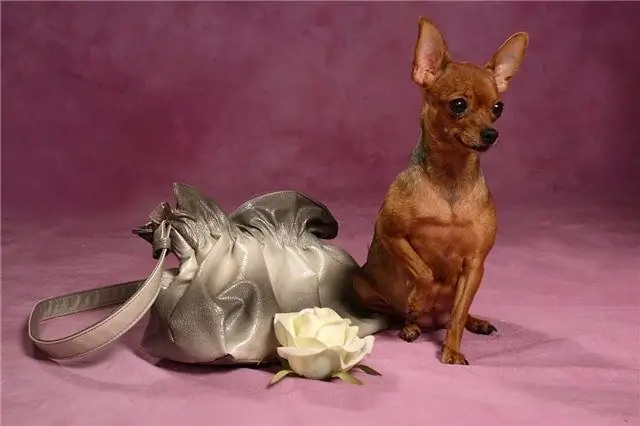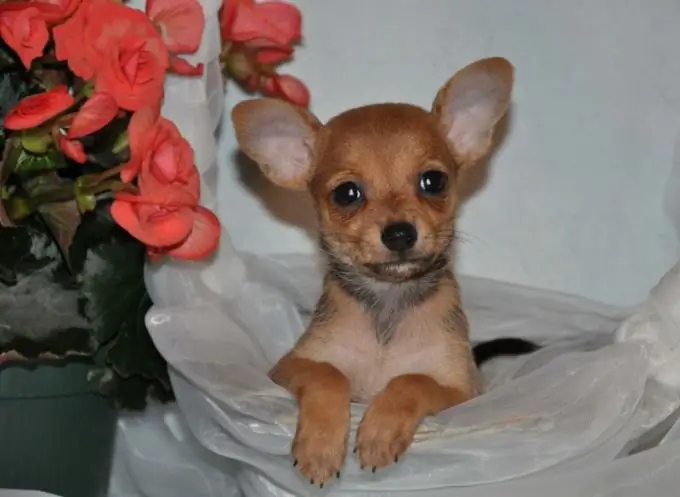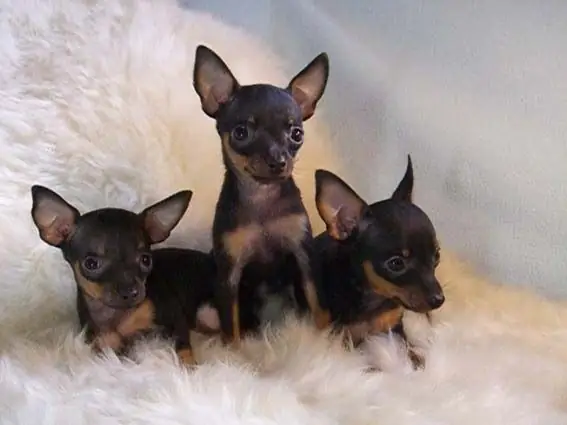- Author Delia Mathews [email protected].
- Public 2024-01-08 23:30.
- Last modified 2025-01-22 15:45.
Toy Terriers are one of the most popular breeds. They are tiny and feel great even in a small apartment. And their cute appearance makes dogs a favorite of children.

Breed: Toy Terrier
Today there are two varieties of toy terriers - English and Russian. Despite the fact that the Russian Toy Terrier appeared much later, it is the most popular, while the English version is endangered.

The Russian Toy Terrier is one of the varieties of decorative indoor dogs that young girls love so much. They are very similar to Chihuahuas, but have a slender body and longer legs. There are short-haired and long-haired varieties. Long hair can be straight or slightly wavy. Despite their tiny size (20-30 cm at the withers) and weighing less than 3 kg, toy terriers are very brave and show attempts to protect the owner if they see that he is in danger.

English toy terriers have a more muscular physique than Russian ones. However, their size is also small. Height is 25-30 cm, and weight is up to 3.6 kg. Also, the English variety has smaller ears, and the coat is always short. Its only acceptable color is black and tan. English Toy Terriers have a more balanced temperament, they are very intelligent and friendly.

History of the breed
The first to appear was the English Toy Terrier. This breed was developed in England in the late 19th century from the Black and Tan Terrier and the Manchester Terrier. Like all terrier varieties, the new breed has received the specialization of the rat catcher. Then the rats were a real disaster for England. In addition to rodent-fighting skills, toy terriers were miniature in size and very attractive, which made them permanent residents of aristocratic living rooms. Later, dogs spread throughout the world. However, later their popularity faded, and now the English Toy Terrier is an endangered breed.

The Russian variety was bred in Moscow in the 50s. The breed was created to counterbalance the bourgeois English Toy Terrier, the favorite of the aristocracy. Prior to that, Soviet dog handlers tried to breed other breeds of their own indoor dogs, but only the Toy Terrier became a successful variety that did not have vices and mutations. The first representatives of the breed were short-haired, in 1958 the long-haired variety appeared. However, at the level of the world cynological community, the breed is still conditionally recognized. She has had this status since 2006.






